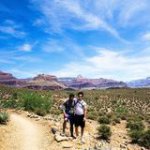
seku
-
Posts
120 -
Joined
-
Last visited
Reputation Activity
-
 seku got a reaction from Sage in Pocket 4K to Alexa Conversion
seku got a reaction from Sage in Pocket 4K to Alexa Conversion
Give us old GH5 users some v4 love as well ?
-
 seku reacted to zerocool22 in Screw buying new cameras, after salivating over cine lens tests I'm spending real money on lenses
seku reacted to zerocool22 in Screw buying new cameras, after salivating over cine lens tests I'm spending real money on lenses
Yeah exactly, 2020 is going to be my rental year. On cooler projects, Im gonna skip my fee and just rent nicer lenses. Which is going to be better for my portfolio anyhow.
-
 seku got a reaction from Chamsom in Small setups w/ vintage projection lens
seku got a reaction from Chamsom in Small setups w/ vintage projection lens
There's quite a few ways to go lightweight, but you didn't mention what sensor size you are going for The Aivascope that @heart0less linked you to is an awesome, single-focus 1.5x for fullframe. It does not need a focusser, but imho it does need support, because it is rather heavy on the taking lens at around 700 gramms. But Aivascope also makes a smaller scope, for smaller sensors.
Here's mine for instance : GH5 > speedbooster > Nikon 50mm 1.8 pancake > Aivascope 1.75x v2 > ProtoDNA. Quite lightweight, does without rails. (see attached picture)
This gives me perfect 2.40:1 when desqueezing opengate 4:3.
Then again when you go vintage scopes there is quite a lot of choice :
Baby Hypergonar (the 1.75x aivascope is a modern take on that one Yashica Scope (a cute small 1.5x one, which i would double focus) Bolex 8/19 (1.5x bolex flare goodness, one of my favorite baby scopes) Baby Kowa (2x, even more elusive than the Bolex) So you can go for light and small scopes, especially if you stick to m43 or s35 sensor sizes ... but it might take a year or 2 to hunt some baby scopes down... and you better have deep pockets.
-
 seku got a reaction from heart0less in Small setups w/ vintage projection lens
seku got a reaction from heart0less in Small setups w/ vintage projection lens
There's quite a few ways to go lightweight, but you didn't mention what sensor size you are going for The Aivascope that @heart0less linked you to is an awesome, single-focus 1.5x for fullframe. It does not need a focusser, but imho it does need support, because it is rather heavy on the taking lens at around 700 gramms. But Aivascope also makes a smaller scope, for smaller sensors.
Here's mine for instance : GH5 > speedbooster > Nikon 50mm 1.8 pancake > Aivascope 1.75x v2 > ProtoDNA. Quite lightweight, does without rails. (see attached picture)
This gives me perfect 2.40:1 when desqueezing opengate 4:3.
Then again when you go vintage scopes there is quite a lot of choice :
Baby Hypergonar (the 1.75x aivascope is a modern take on that one Yashica Scope (a cute small 1.5x one, which i would double focus) Bolex 8/19 (1.5x bolex flare goodness, one of my favorite baby scopes) Baby Kowa (2x, even more elusive than the Bolex) So you can go for light and small scopes, especially if you stick to m43 or s35 sensor sizes ... but it might take a year or 2 to hunt some baby scopes down... and you better have deep pockets.
-
 seku got a reaction from deezid in Sigma Fp review and interview / Cinema DNG RAW
seku got a reaction from deezid in Sigma Fp review and interview / Cinema DNG RAW
Iirc they just put the RAW stuff into an SRGB/gamma 2.6. Which seems quite ... unusual. whenever i do raw stuff in resolve, i go for blackmagic film, as flat as possible, then onwards to cineon and other log stuff. as i understand they tried to emulate the RAW to something they can compare to their other measurements.
For me, RAW needs special treatment : ETTR, normalisation, and then noise reduction (i love neatvideo for that). it's difficult to compare the fp's dynamic range, because all other cams lower the noise floor already. you need to do your part in RAW yourself.
-
 seku got a reaction from deezid in Sigma Fp review and interview / Cinema DNG RAW
seku got a reaction from deezid in Sigma Fp review and interview / Cinema DNG RAW
yep, and it even seems to have ok-ish rolling shutter @ 20ms. Maybe i will get one and pair it with a bolex 1.5x or Kowa C35. Now we just need a l-mount to EF/Nikon adapter with integrated VariND, and this little cam will pack a hell of a punch.
The only thing i am worried about is the flickering issues, and wondering if the sensor is fully read out, or is line skipping/skipping around the sensor.
About the 300mbyte/sec CDng RAW: i plan to run it through Slimraw, at 1:3 to 1:7 compression. This gives me 5dmk3 RAW filesizes, at 4K! If RED won't allow compression incam, i will compress it out of cam :3
Edit: did i mention the losslessly or lossy CDng opens fine in Resolve?
-
 seku got a reaction from Lars Steenhoff in Sigma Fp review and interview / Cinema DNG RAW
seku got a reaction from Lars Steenhoff in Sigma Fp review and interview / Cinema DNG RAW
yep, and it even seems to have ok-ish rolling shutter @ 20ms. Maybe i will get one and pair it with a bolex 1.5x or Kowa C35. Now we just need a l-mount to EF/Nikon adapter with integrated VariND, and this little cam will pack a hell of a punch.
The only thing i am worried about is the flickering issues, and wondering if the sensor is fully read out, or is line skipping/skipping around the sensor.
About the 300mbyte/sec CDng RAW: i plan to run it through Slimraw, at 1:3 to 1:7 compression. This gives me 5dmk3 RAW filesizes, at 4K! If RED won't allow compression incam, i will compress it out of cam :3
Edit: did i mention the losslessly or lossy CDng opens fine in Resolve?
-
 seku reacted to Tito Ferradans in Do single focus solutions change the focal length of the lens?
seku reacted to Tito Ferradans in Do single focus solutions change the focal length of the lens?
I heard "diopters" and was summoned here.
I personally haven't published much on how diopters work besides what's in my original guide - www.tferradans.com/anamorphic
But I have a ton of research and drafts expanding on the subject.
Most vari-str diopters (single focus solutions) act as a wide-angle adapter when close focused (Rectilux is 0.9x for example, I have notes on the others too, but not by memory), and regular diopters alter focal length a tiny little bit (you should disregard it).
Here's a great article by Jay Holben on diopters - https://ascmag.com/blog/shot-craft/deep-focus-diopters
and an instagram post by the author of the article, expanding on depth of field and the things it sounds like you're looking for:
-
 seku reacted to mercer in Sigma Fp review and interview / Cinema DNG RAW
seku reacted to mercer in Sigma Fp review and interview / Cinema DNG RAW
There’s uncompressed 10 and 12 bit 4K CDNG raw out to SSD through USB-C.
-
 seku reacted to anonim in Panasonic FF L-mount Cine camera coming
seku reacted to anonim in Panasonic FF L-mount Cine camera coming
Really without irony, I actually admire people that use AF lenses - every time I tried that, I find myself as stupid without possibility to directly communicate with lens... Also without aperture ring I'm lost. I feel lens as manual painting instrument - I sold nice collection of Contax Zeiss just because Leica R's set feels better in that regard
-
 seku reacted to kye in The peer-to-peer colour grading thread
seku reacted to kye in The peer-to-peer colour grading thread
This is an interesting image showing many different frames:
-
 seku got a reaction from kye in The peer-to-peer colour grading thread
seku got a reaction from kye in The peer-to-peer colour grading thread
yeah, it all is based on intent... it's no easy task
I am also waiting for a couple of screens to arrive, that i want to use for scopes and false color.
Btw, once you get to 50IRE, it becomes way punchier :
-
 seku reacted to Sage in GH5 to Alexa Conversion
seku reacted to Sage in GH5 to Alexa Conversion
There are several variables that combine in skintone; color separation, saturation model, skin color, light color spectrum, white balance, lens coloration.
Color Separation: Good cameras have color separation. Less ideal color science will have 'accordioned' hues, compressing and expanding arbitrarily throughout the hue circle. For skintone - under quality light, the Alexa will have great separation between the pink aspects of the face (lips, blush) and skintone, which rides the line between too green and too magenta under flat spectrum light
Saturation Model: Photometric saturation models (like Alexa LogC+R709 or EC LogC+R709) have less saturation (the video model). Saturation amplifies hue difference, and photometric models can make skin tones seem more alike. The EC variations emphasize saturation (film backend), which foregrounds skin hue
Skin Color: The skin of the talent may be slightly more olive (dark and yellow in hue) or pale with pink as the primary hue accent (all vary towards magenta with emotion). Here is a recent still from the film I've been shooting, with two people in the same frame that had divergent skin hues:
Light Color Spectrum: On the Alexa (and cameras generally), filming under light that has a spikey color spectum (Leds, Flos, Sodium Vapor, etc.) can cast skintone distinctly to green or magenta, even with correct -
White Balance: A fully neutral WB is vital for EC, not only in skintone, but the whole of color space accuracy. Skintone is one of the reliable indicators that WB might be off on the green/magenta axis when under reference light without a white card reference (should anchor on the skintone line of the Vectorscope under sunlight and halogen). A common occurrence is that WB will be set for direct sun on the GH5 (possibly with the WB sun preset), and then the shoot will move into the shade, which will shift the WB towards blue/magenta (needs a new WB, or correction in post ahead of the conversion)
Lens Coloration: Interrelated with WB is lens coloration, which is like a WB that variably shifts throughout the grayscale [For EC: it is optimal to WB around middle gray, or a little brighter for the most salient part of the image]. This can vary from minimal coloration (Sigma 18-35) to heavy coloration (for example, Xeens). For NDs - the reference EC ND is the Firecrest FSND, which evenly cuts the full spectrum (visible/invisible). Non FSNDs (even IRNDs) will have a varying ratio between IR/UV and visible, which can unpredictably shift sensor response to a given light (interacting with the camera sensor's native cut). Variable IR ratio particularly acts on the green/magenta axis
Notably, EC Tungsten does have a slight magenta bias in the skintone region towards magenta compared to the Alexa. I've figured out what in the data was causing this problem (IR leak every third exposure slice), and this will be solved for the next release.
-
 seku got a reaction from Vision in The peer-to-peer colour grading thread
seku got a reaction from Vision in The peer-to-peer colour grading thread
here's my take at it, please be gentle
-
 seku got a reaction from kye in The peer-to-peer colour grading thread
seku got a reaction from kye in The peer-to-peer colour grading thread
here's my take at it, please be gentle
-
 seku got a reaction from tweak in Canon 5D mark iii RAW video 2018
seku got a reaction from tweak in Canon 5D mark iii RAW video 2018
nice looking stuff
i'm no longer shooting on 5d RAW, but my workflow was rather easy:
1. Mount the MLV files in MLVFS (this mounts a new virtual hard drive where all of your files miraculously transferm into cinemadng in real time)
2. Import the files from the virtual drive into Davinci Resolve. Transform the RAW into linear, then linear to Arri LogC.
3. Cut and grade at leisure.
4. Export as dxnhd or your preferred codec
-
 seku reacted to Hans Punk in 75 GBP vs 750 GBP Single Focus Adapter
seku reacted to Hans Punk in 75 GBP vs 750 GBP Single Focus Adapter
Inspired by @Justin Bacle and his post, I recently picked up the big brother of the GB-Kalee that had damaged internals - but luckily the front focusing section was in great condition. The optics are a beastly 100mm front and rear so I separated the front focusing assembly and have been pretty impressed by the optic quality and coating.
I post this here as it is a bit more info on the bigger brother of the GB-Kalee Small as it may inspire others to remount or test further these lovely vintage optics as single focus solutions. Unfortunatly I have just started a long term job that does not allow me to spend time playing with re-mounting this beast, so I've decided to sell.
From what I can tell, to get minimum focus on this big boy (of 1m) - the front and rear optics need spacing of approx 40mm...which unfortunately is further than the helicoid will allow without unscrewing and separating the two body halves. However if someone was to re-mount or rail-mount the optics in some kind of MacGyver fashion, you'd have a very tasty big boy focusing optic to play with. Like I said, I now have no time to experiment with this myself, but from some rough handheld tests - it appears to deliver the same high quality as it's smaller Kalee brother, but with bigger optics.
In a shameless move (but target to those following this thread who might find interesting) , here is my focusing assembly listed on ebay: http://www.ebay.co.uk/itm/GB-KALEE-VARAMORPH-Focusing-front-Assembly/253440130338
-
 seku reacted to hyalinejim in GH5 to Alexa Conversion
seku reacted to hyalinejim in GH5 to Alexa Conversion
But Main and Soft don't perform the transformation from Alexa Wide Gamut to Rec709 primaries. So the hues are "wrong" - the are the colours of an acquisition colour space.
GHa LogC to Alexa X 2 gamut gives colour as Arri intended, I'm thinking. But Main and Soft are simply slightly more contrasty and more saturated versions of Log C (with saturation roll-off?).
Now, this might be of interest as a look in itself, especially if people are grading Arri LogC directly and leaving the colour space untouched. But I would suggest to you that if Main and Soft are your interpretation of a film-like Rec709 look with saturation roll off and other good things, then you should transform the primaries. The ColorChecker shots above demonstrate just how far out Main is. The hue, saturation and value of colours are significantly skewed as they haven't been transformed to Rec709 primaries.
So am I right in saying that if I want to match Alexa colour, GHa LogC plus a LogC to Alexa X 2 gamut lut is the way to go?
-
 seku reacted to Sage in GH5 to Alexa Conversion
seku reacted to Sage in GH5 to Alexa Conversion
I look forward to seeing your work!
For a little update, I faced the most absurd technical challenge last week.
Thursday, after a week of struggle, it was solved; today was the very first test with the Arri
-
 seku got a reaction from Mark Romero 2 in Dynamic Range of ML RAW vs h.264 / h.265 Cameras?
seku got a reaction from Mark Romero 2 in Dynamic Range of ML RAW vs h.264 / h.265 Cameras?
i hope i am not too harsh, but there is no 4k ML raw. closest you can get is 3.5k wide, but that's considerably more squeezed than 21:9. Also, you'll get a few seconds at that resolution at best. Also, consider that ML RAW has no highlight rolloff. it clips quite harshly. because it's raw the highlight rolloff you saw in the videos was probably handed quite handsomly by a gifted colorist who recorded ML RAW with enough leeway to let it roll off nicely in post.
Flexibility in grading? oh yes. ML RAW is awesome for that. but you need to learn to shoot with grading in mind.
For your bonus question: the 5Dmk3 is meh for DR. chroma noise creeps up quickly. you don't need any white balance, as this is RAW. i personally would not go above ISO 3200 with the 5dmk3.
-
 seku reacted to Bold in Single Focus Isco anamorphicstore.com questions
seku reacted to Bold in Single Focus Isco anamorphicstore.com questions
Seku, I don't want to derail the thread any further so I'll pm you
-
 seku got a reaction from webrunner5 in Masters of darkness - Panasonic GH5S and Sony A7R III in extreme low light
seku got a reaction from webrunner5 in Masters of darkness - Panasonic GH5S and Sony A7R III in extreme low light
Well... i was interested in how well the GH5s compares to the GH5, 5dmk3 and the a7r3 in terms of lifted shadows on RAW images... just to see how good the sensors are.
From the recent dpreview, here's a screenshot of the 4 cams at +6 stops ...
Imho, the raised shadows from the GH5s and the GH5 seem similar. They both beat my old 5dmk3 handily.
But damn, that A7r3 ... that image quality should be forbidden. If only its codec could keep up
-
 seku got a reaction from webrunner5 in Canon 5D mark iii RAW video 2018
seku got a reaction from webrunner5 in Canon 5D mark iii RAW video 2018
@Django : agreed on hit&miss. sound works fine, unless you use compressed RAW mode. (and i think they added mlv_sound to mlv compressed crop just a few days ago)
if you use Resolve the workflow is very easy with MLVFS tho (it takes me less than a minute to ingest some 100 clips into Resolve with sound).
-
 seku reacted to cpc in Canon 5D mark iii RAW video 2018
seku reacted to cpc in Canon 5D mark iii RAW video 2018
You can use the spotmeter for this. This simple tool is faster/better than a waveform for judging skin exposure and not nearly as obtrusive as false color (you can have it on ALL the time). All you need to know to make good use of it is the map between the numbers you see in the profile you are monitoring with (say, you have the camera set to Standard while shooting raw) and the the numbers you'll get in post after doing your raw import routine. Shoot a grey chip chart, record what goes where in live view (or just record a clip in Standard), import the raw footage and make a table with two columns. Voila, you now know that +1 is ~175 in "spotmeter values" and falls wherever in your imported footage. You don't really need to memorize the mapping with great precision. All you need is knowing where a -3 to +3 range falls as this is where the important stuff is in an image.
Knowing your tonal curves is useful in most situations anyway. But it happens to be priceless when shooting raw and monitoring an image which you know is different than what you'll be seeing in post.
-
 seku got a reaction from Nathan Gabriel in Masters of darkness - Panasonic GH5S and Sony A7R III in extreme low light
seku got a reaction from Nathan Gabriel in Masters of darkness - Panasonic GH5S and Sony A7R III in extreme low light
Well... i was interested in how well the GH5s compares to the GH5, 5dmk3 and the a7r3 in terms of lifted shadows on RAW images... just to see how good the sensors are.
From the recent dpreview, here's a screenshot of the 4 cams at +6 stops ...
Imho, the raised shadows from the GH5s and the GH5 seem similar. They both beat my old 5dmk3 handily.
But damn, that A7r3 ... that image quality should be forbidden. If only its codec could keep up






